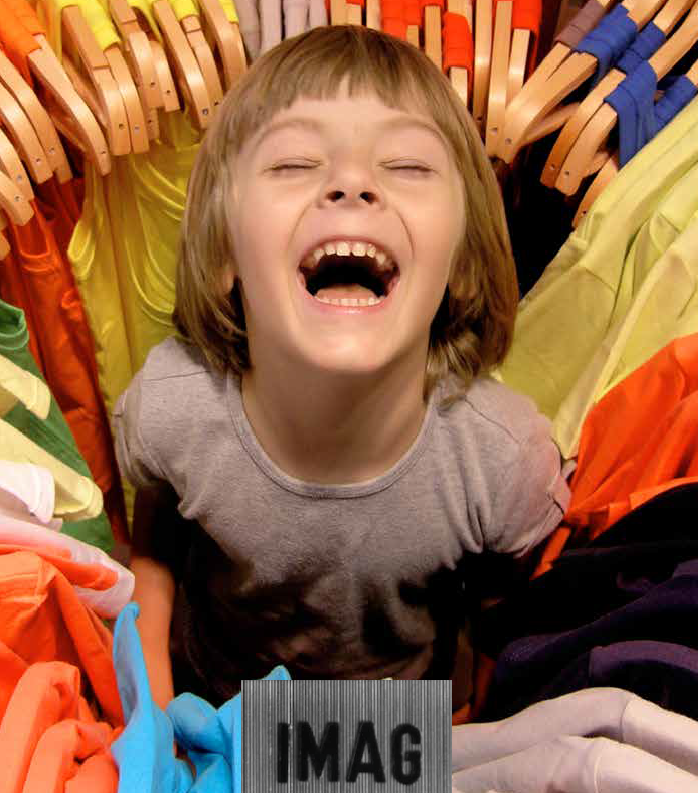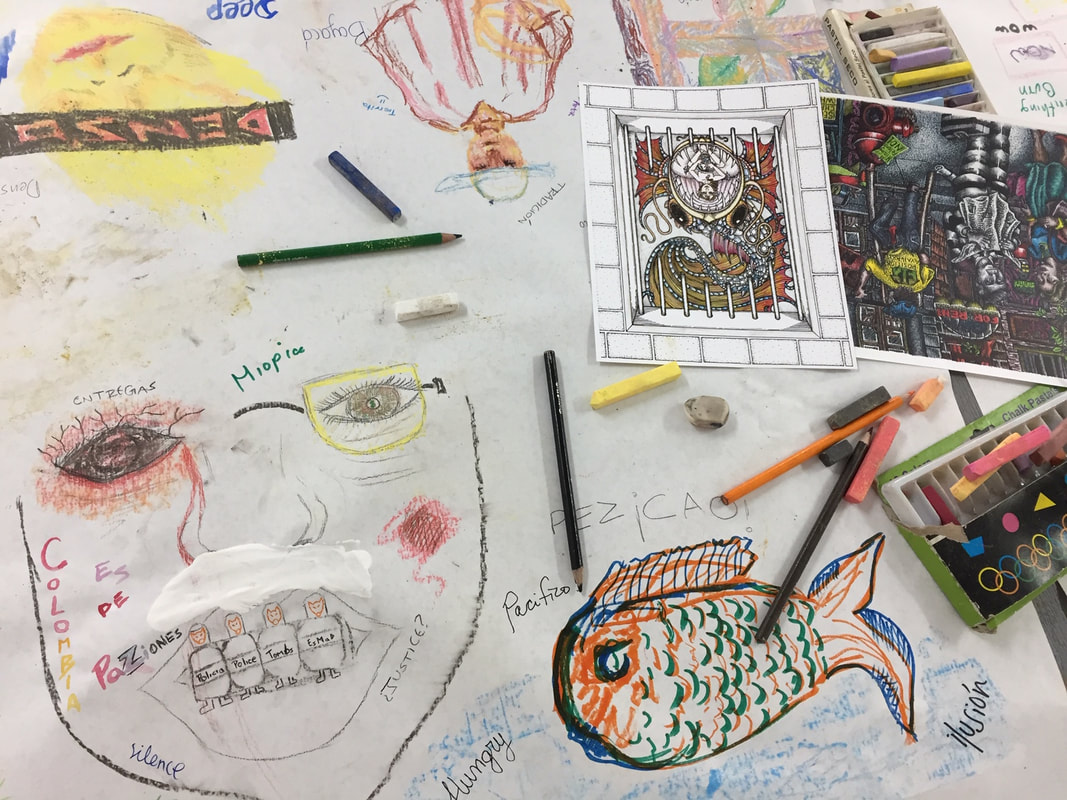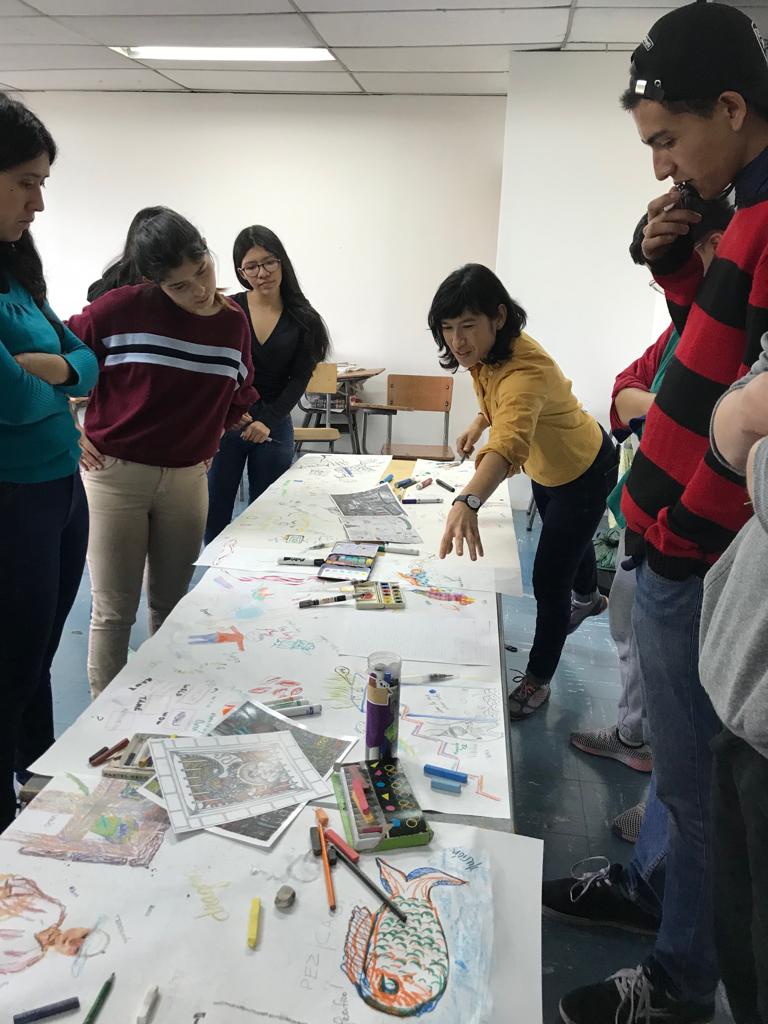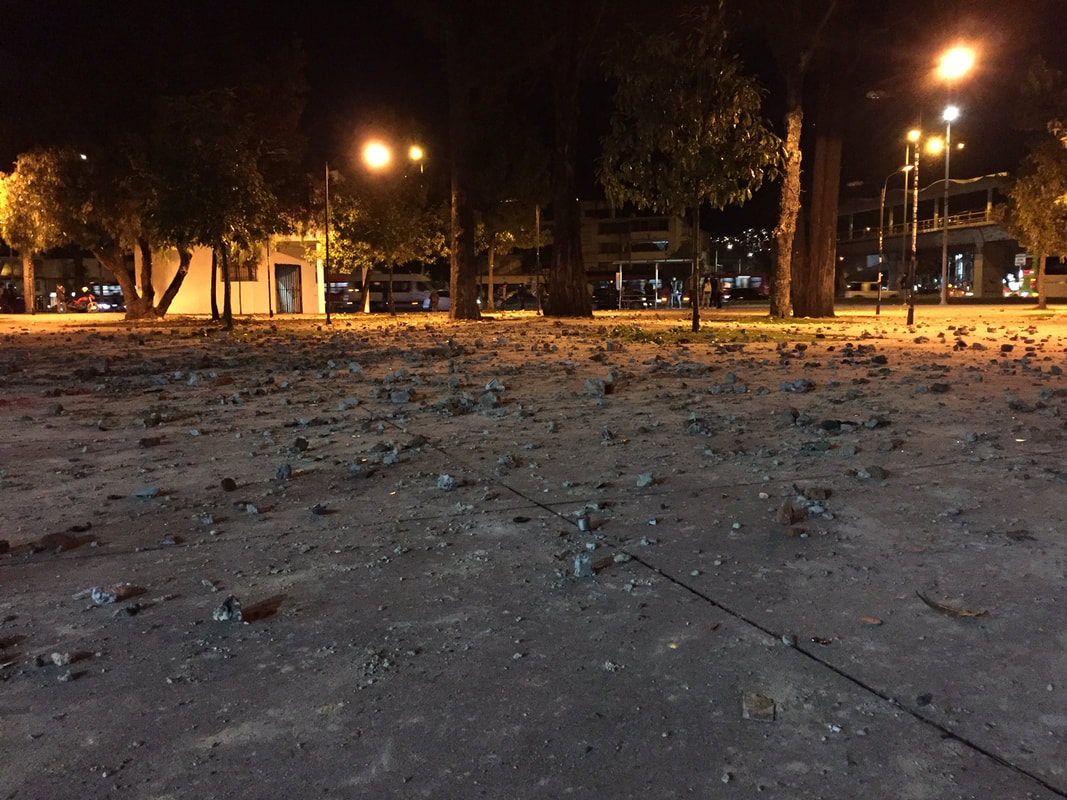|
Very excited to announce that our article, Process as the medium for socially engaged art, has been published in IMAG#7! Big thanks to InSEA and the editorial team- Ângela Saldanha, Bernadette Thomas and Teresa Torres de Eça.
"IMAG number 7 presents a collage of different essays created by InSEA members. When we initiated this issue we wanted to make visible the diverse range of art education practices in formal and non-formal settings and to invite the readers to engage in a visual journey; a process of ‘encountering others’. There is no filter on what should or should not constitute art education. Rather, here we have a mosaic of approaches; of ways of making and ways of understanding the role of art education in the schools, museums; universities and communities. We travel according to the last InSEA roads through the encounters generated during InSEA seminars and congresses. The journal opens with a story told by Steve Willis, current Vice President of InSEA, where he shares impressions, feelings and thoughts about his experience during the InSEA seminar in Walvis Bay, Namibia (Encounters with Otherness to achieve Knowingness). As our journey continues, the reader meets Korinna KorsströmMaggatröm-Magga (North Calling); Anastasia Artemeva and Arlene Tucker (Process as the medium for socially engaged art); Phivi Antoniou (Cyprus) and Dina Adel Hassan (Egypt). The northern authors reveal community art practices and social engaged intercultural projects in Finland and Russia. In the same section a different encounter invites the reader to learn about other socially engaged art education experiments in Alexandria, Egypt, with Dina Adel Hassan who describes using images, an experience conducted with Children at Risk in Egypt." Download The full ISSUE ( PDF 17,9 MB) or individual chapters. Otherness as a Form of Knowingness Steve Willis DOI: 10.24981/2414-3332-7.2019-2 Process as the medium for socially engaged art Anastasia Artemeva and Arlene Tucker DOI: 10.24981/2414-3332-7.2019-3 North Calling Korinna Korsström-Maggatröm-Magga DOI: 10.24981/2414-3332-7.2019-4 Field Experiments in Visual Arts: Children at Risk, Homeless Children Dina Adel Hassan DOI:10.24981/2414-3332-7.2019-5 People, Stories and Histories of Strovolos III – Public art, social engagement and situational practices Phivi Antoniou DOI: 10.24981/2414-3332-7.2019-6 The past in the present Ismini Sakellariadi DOI: 10.24981/2414-3332-7.2019-7 Educating through design | Eduquer par le design: Naissance d’un club de design Azza Maaoui DOI: 10.24981/2414-3332-7.2019-8 Maktab Gammarth Toursom Myriam Errais Borges DOI:10.24981/2414-3332-7.2019-9 Elisavet Konstantinidou & Eva Pavlidou DOI: 10.24981/2414-3332-7.2019-10 Exploring artistic and cultural identity through an art curriculum unit Fotini Larkou DOI: 10.24981/2414-3332-7.2019-11 Pensar, espacio, piel. Un ensayo visual desde nuestra experiencia como a/r/tógrafas. | To think, space, skin.A visual essay from our experience as a/r/tographers. María Martínez Morales; María Isabel Moreno Montoro and Nuria López Pérez DOI: 10.24981/2414-3332-7.2019-12 “Art Lab x Kids: art as an instrument for discovery and knowledge”: a visual literacy Project Katia Pangrazi DOI: 10.24981/2414-3332-7.2019-13  Welcome to the 16th ETMU Conference 2019 on SOLIDARITY, PARTICIPATION, AND POLITICS! November 14-15, 2019 Tampere University, Tampere, Finland Anastasia Artemeva and Arlene Tucker will be presenting Free Translation Sessions on Thursday, November 14th. We are grateful and excited for this experience. The conference addresses different meanings and concrete practices of solidarity, participation, and politics and their effects in the context of global mobility and ethnic relations. Today, the overall question of migration has become extremely politicized and views concerning it are polarized. In particular, populism and far-right activism manipulate the issue to promote ethno-nationalist agendas across the globe. These developments have fed into policies that rely on violence at the borders, abjection of people on the move and the negligence of their human rights. Predominant responses among states across the European Union and more globally rely on enhanced surveillance of borders, tightened criteria for entry and stay as well as hierarchical categorizations of those living inside Europe. At the same time, there are calls for policies that would support the development of more inclusive societies, respect for human rights and solidarity. Inclusive participation and solidarity are indeed described as ways to enhance equality among diversely positioned people or as antidotes to the crisis of democracy. Hence, questions of global mobility and ethnic relations touch societies profoundly at multiple levels and in diverse ways ranging from mundane relations and encounters to the principle of rule of law and social justice. Confirmed keynote speakers are Dr. Prem Kumar Rajaram (Central European University, Vienna, Austria), Dr. Elisa Pascucci (University of Helsinki, Finland), and Dr. Nira Yuval-Davis (University of East London, UK). For more information and to register for the conference please click here: https://events.tuni.fi/etmu2019 BIG thanks to Culture for All Service and Globe Art Point through the Avaus-project for supporting Free Translation Session. During my art residency at Universidad Nacional de Colombia I had the honour to hold a few seminars with art professor Ana Maria Sanchez Lesmes and her art and education students. A couple of the seminars regarded my Dear You art project while the other one focused on exchange and process. I used Translation is Dialogue and my other projects as gateways to show how translation techniques can be a method to open up dialogue, process information, and help articulate one's ideas and make oneself heard. Since Ana has such a diverse group of students coming from fields of art education, architecture, art, and psychology, to name a few, we also discussed the value of interdisciplinary approaches. We started the session with a long table draped with different types of paper- blank and ready to be inked up, drawn on, covered with words transferred from the mind. I suggested that we all put out on the table our drawing tools to share, in hopes of establishing a creative and collective presence. On top of the paper were images from artists that have submitted artworks to Free Translation exhibition. For example, works by Carole Alden, Todd Hollfelder, and the spring class from the Richmond City Justice Center made multimedia art with Virginia Commonwealth University Open Minds program in 2015 were presented. I invited the group to draw whatever comes to their mind as they processed these artworks. I simply said, "Don't think too much. Just do, make, draw, write." As everybody works differently, the pacing at first was slow, but soon after everybody was hovering around the table drawing and painting. Splashes of conversation, here and there, would arise, but for the most part we all were intently focused on drawing and moving around the table to add our interpretations to the different images. After about an hour of conversing artistically and visually, we felt it was time to verbally discuss. Some students felt this experience was therapeutic and calming. Some felt it was difficult at first to know what to draw, but once they found an entry, it became easier and fun. Some felt it was relieving to not only draw with art students- that this mix of backgrounds and disciplines made it more relaxing to just draw and not worry about being judged by other artists. Some enjoyed this as an opportunity to listen to other perspectives and not feel inhibited by contradictory thoughts. Some enjoyed experimenting with new materials. Some felt that this was a release to talk about current events and the political situation between university students and the government. Regardless, the conversation flowed naturally and went deep into corners about what we hope and dream as individuals and as a community. It is important to mention that the day before this seminar, I was scheduled to give a presentation on my work. Last minute, it was canceled due to protests on campus regarding higher education. That day I was on campus working and having meetings. I thought my headache was from jet lag, but no, it was from the fumes put in the air by the police. I was told that the police were spraying "gases lacrimógenos" something like "tear gas" into the air. The invisible can be equally damaging and painful as what is before our eyes. At first, it was hard to gauge the danger or severity of the protests as everybody was respectful of each other's wishes to join the protest or watch from the sidelines. The police, as their robocop uniform suggests, creates a wall to oppose (to oppose what?), to protect (to protect what?) and mostly, from what I felt, to not listen to ideas suggested from other perspectives. Also, it was shocking to me how normalized these situations can quickly become; the sound of bombs, the feeling of the fumes getting into your system, the inconvenience of entrances being blocked due to the protests all became a part of daily life in a matter of minutes. These issues, amongst others, were raised after our collective drawing, yet you can see that they were still fresh in many people's thoughts as they became apparent in the images. Thank you so much UNAL, Ana, and Ana's students for their openness and willingness to want to share, exchange thoughts and to have an open dialogue! I feel that, with those elements in place, anything is possible. XOXO, arlene Sidenote: that morning as I was walking to the University I saw a few robocops drinking coffee and having breakfast on a backstreet outside of campus. I had never seen this kind of uniform and did not assume that they were police as their outfit looked really unpractical. How could they help somebody wearing such an immobile costume? I soon learned their role. It was interesting to talk to people about this and the symbolism behind their suit. Some people said that they wear masks so that it's easier to hurt other people. Another idea was that their machine looking costume desensitizes their human nature, making it easier to act with force on other life forms. Is this true? What do you think? How does your outfit dictate your actions? Do you feel how you look has an affect on how you act? References:
https://colombiareports.com/colombias-teachers-join-students-in-nationwide-protest-police-warns-for-extremists/ https://www.counterpunch.org/2019/10/02/colombia-diary-under-heavy-manners/ https://freetranslation.prisonspace.org/ http://unal.edu.co/ https://www.vice.com/es_co/article/4w9k5q/che-universidad-nacional-santander-tropel-1976-policia |
ContributorsArlene Tucker: author and curator of TID Arch
|







 RSS Feed
RSS Feed
